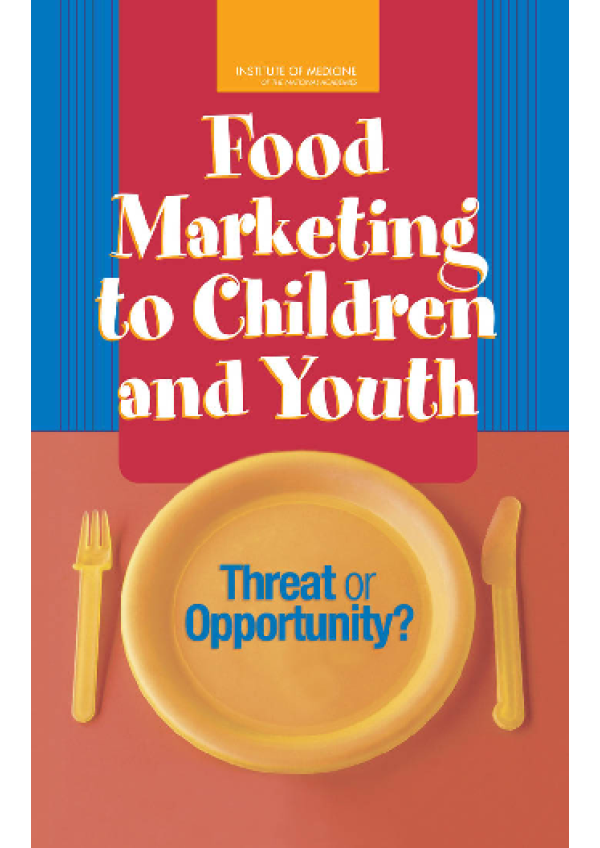Food Marketing to Children and Youth
Marketing works. It is a primary engine of our economy and its content can sometimes give us a glimpse of the forces shaping our futures. How marketing affects the perspectives and behaviors of our children and youth, including their diets, has been a subject of active discussion and debate for more than three decades, beginning in a time when marketing could generally be characterized in terms of the advertising done through the traditional media—television, radio, print. Times have changed markedly. Marketing is now a regular feature of virtually all the venues and communication vehicles we encounter in our daily lives. Television advertising remains the dominant form of marketing reaching children and youth that is formally tracked, but the expansion of alternative advertising and marketing strategies is evolving rapidly.
Against the backdrop of pressing public concern over the rapid and widespread increase in the prevalence of childhood obesity, Congress, through the FY2004 Health, Labor, and Education Committee appropriation, directed the Centers for Disease Control and Prevention (CDC) to undertake a study of the role that marketing of food and beverages may play as a determinant of the nutritional status of children and youth, and how marketing approaches might be marshaled as a remedy. The CDC
turned to the Institute of Medicine (IOM) of the National Academies to conduct this study, a natural corollary to the IOM report released in 2004, Preventing Childhood Obesity: Health in the Balance.
The IOM Committee on Food Marketing and the Diets of Children and Youth is pleased to present this report, Food Marketing to Children and Youth: Threat or Opportunity? The report represents the most comprehensive review to date of the scientific studies designed to assess the influence of marketing on the nutritional beliefs, choices, practices, and outcomes for children and youth. In conducting our study, the committee not only developed and applied a rigorous analytic framework to the assessment of the
relevant scientific literature but also undertook an extensive review of the nutritional status and trends for children and youth, what is known about the full range of factors that influence their dietary patterns, the broad and evolving food and beverage marketing environment, and the relevant policy
levers that might be brought to bear to improve our children’s nutritional status. Important and relevant findings from our committee’s review are distributed throughout the body of the text. A summary list of the findings is provided in the final chapter, along with the committee’s overall conclusions and recommendations. This report notes that the prevailing pattern of food and beverage products marketed to children and youth has been high in total calories, sugar, salt, fat, and low in nutrients. A dietary profile that mirrors the products marketed would put our children and youth at risk for the types of nutritional problems that we see occurring today—increasing rates of obesity, and inadequacies of certain important micronutrients—and for the development of various serious chronic diseases later in life. Dietary choices are made in the midst of myriad social, cultural, and economic environmental influences. The focus of the committee was on the role of food and beverage marketing as one of these intersecting influences.
Belum ada ulasan untuk buku ini.


